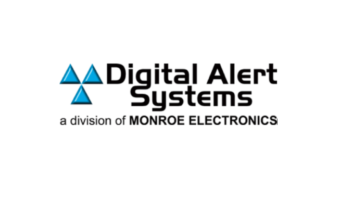While FEMA figures out the legal issues of all that, it’s going ahead with trials of digital EAS this summer in eight states, including North Carolina and Texas.
Craver said FEMA, through NOAA, is establishing a test center to make sure new I-PAWS and CAP equipment is certified. It’s also increasing the number of primary entry point stations for EAS from the current 36 to 63 stations.
FEMA wants to go slow on adopting CAP and “get it right,” Craver said.
That frustrates broadcasters, who are ready to move on CAP.
Art Botterell, manager of the community warning system in California’s Contra Costa County, didn’t want to hear that I-PAWS is going forward and CAP isn’t. He said it’s time for FEMA to lead, follow or “get the heck out of the way.”
“If you’re really worried about the legal handwringing of ‘Do we have the legal basis to do this,’ fine. But please do not hold up the adoption of CAP.”
At a meeting in the fall that included representatives from FEMA, SBE, NAB, NWS and other groups, one source told me, FEMA assured broadcasters it was moving forward. That’s when the SBE first suggested working groups be developed to implement CAP-EAS.
“How do we know these things are being considered?” Freinwald asked rhetorically.
Botterell predicted broadcasters would likely adopt two implementations, first building the CAP-based backbone delivery network and then deploying adapters that would “dumb that down” to current signaling methods until the I-PAWS infrastructure is in place.
Suzanne Goucher, chair of the Maine SECC, said the 180-day compliance timeframe for broadcasters may need to be reconsidered, questioning whether that was enough for manufacturers to ramp up production of new encoders/decoders and for broadcasters to get those new boxes installed. The 180-day clock begins ticking once FEMA publishes its CAP-EAS standard in the Federal Register; no one can predict when that might be, other than it’s not happening anytime soon.
And what of broadcasters’ questions about whether their current encoders/decoders will work for CAP-EAS? Will the feds provide stations money for an upgrade? SBE has attempted to define some answers on its Web site.
At a follow-up meeting at NAB after this week’s EAS summit, I hear broadcasters, equipment manufacturers and others formed an ad-hoc working group to study CAP protocol implementation further and then make a recommendation to regulators. They hope to have the first meeting in early July.
The upshot of all of this is that EAS is still an unfunded federal mandate in some respects, and all broadcasters may or may not be required to participate in all aspects of the new version.
I suspect another reason FEMA may be cautious in how it moves forward, aside from the legal issue, is that it’s looking ahead in expectation that its workload and priorities may change when a new administration comes in. That has EAS observers worried about a potential loss of attention on the issue, some told me at the meeting.












